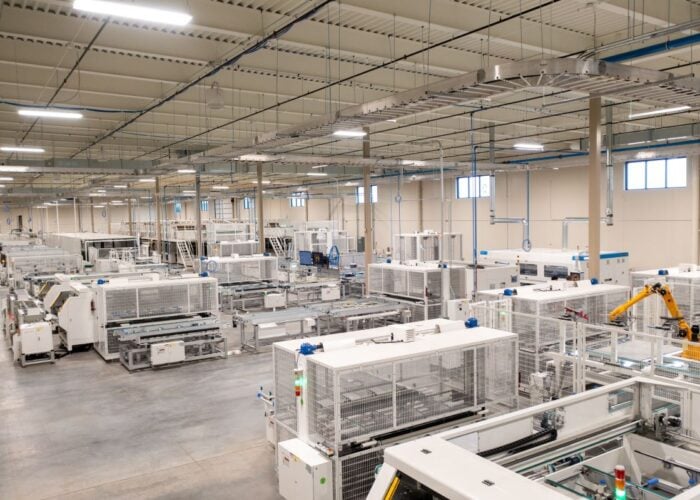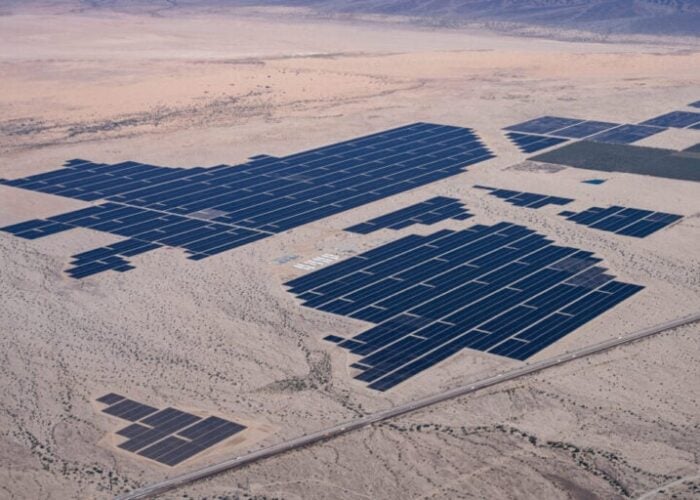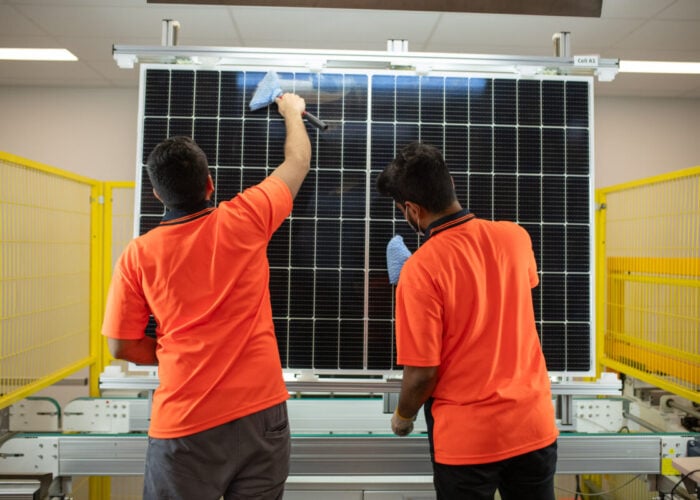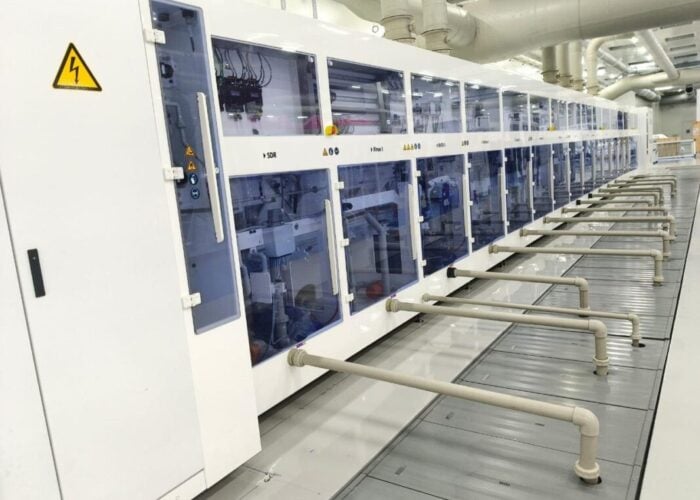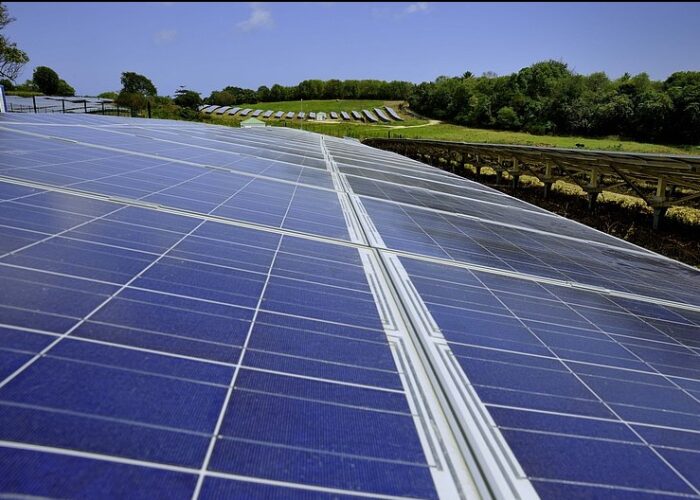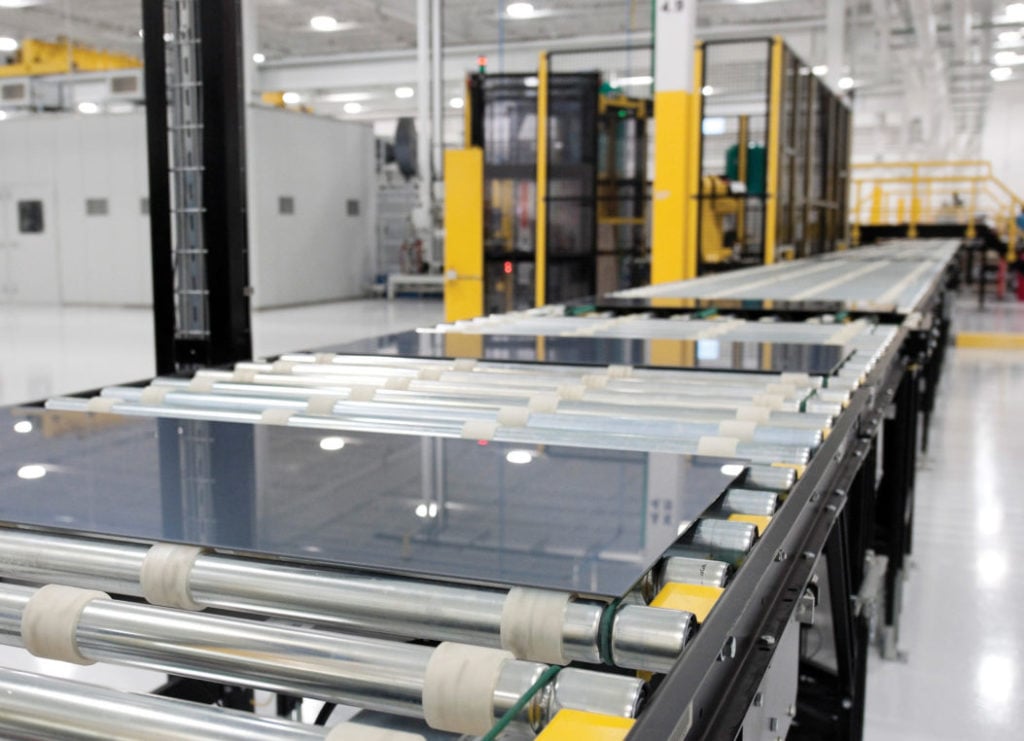
US solar PV manufacturer First Solar has broken ground on a new, 3.5GW fully integrated manufacturing plant in Iberia Parish, Louisiana.
Originally announced in July – with the location then confirmed in August – the factory is First Solar’s fifth in the US and represents US$1.1 billion in investment. The first shipments of First Solar’s Series 7 modules are expected to leave the new plant in the first half of 2026, at which point the company will have reached 14GW nameplate manufacturing capacity in the US.
Unlock unlimited access for 12 whole months of distinctive global analysis
Photovoltaics International is now included.
- Regular insight and analysis of the industry’s biggest developments
- In-depth interviews with the industry’s leading figures
- Unlimited digital access to the PV Tech Power journal catalogue
- Unlimited digital access to the Photovoltaics International journal catalogue
- Access to more than 1,000 technical papers
- Discounts on Solar Media’s portfolio of events, in-person and virtual
Mark Widmar, CEO of First Solar said: “This facility, like its sister facilities in Ohio and Alabama, represents First Solar’s investment in our country’s future. We are creating enduring value for the US by building a robust solar manufacturing base and the value chains that enable it.
“This delivers jobs and economic value today, and establishes the foundations needed for the country to enter the next decade with a secure supply of solar energy technology.”
First Solar is one of a slew of companies that have announced US manufacturing plans in the last year, since the passing of the Inflation Reduction Act (IRA) an its tax incentives for homegrown solar. Hanwha Qcells, Trina Solar and Heliene are among the other manufacturers that have made significant US capacity announcements, and component suppliers such as Nextracker have also made new facility announcements.
Following all of these announcements, the Solar Energy Industries Association said that the IRA could see US solar manufacturing jobs triple to 120,000 by 2033, as companies look to develop a workforce to support the growing industry.
The IRA includes an extra 10% domestic content (DCR) tax adder, which developers can access if they can prove that the materials deployed at their sites meet a minimum 40% cost-based domestic production threshold. This threshold will rise to 55% in 2026.
As a manufacturer of thin-film cadmium telluride, First Solar may be particularly well-poised to exploit the DCR as it is insulated from the import-heavy silicon supply chain; silicon solar cells make up around 50% of the average solar module cost, and the scarcity of domestic capacity requires most US manufacturers to rely on imports.
As of April this year, First Solar had sold the entirety of its US module capacity through 2026 and announced a backlog of over 70GW. It has long-term supply deals in place with a number of developers, including Matrix Renewables and Lightsource bp.
More recently, an internal audit by the company found evidence of unethical labour and recruitment practices at its Malaysia manufacturing plant

